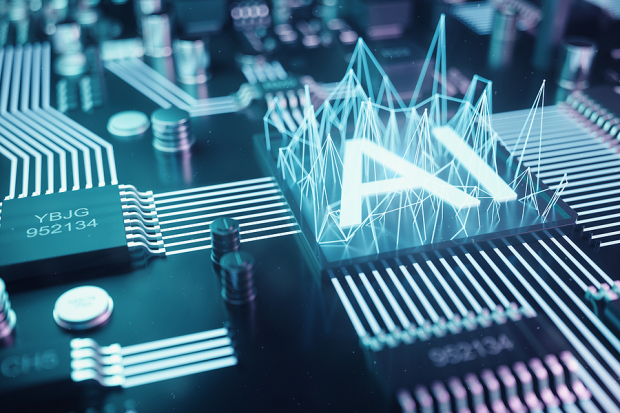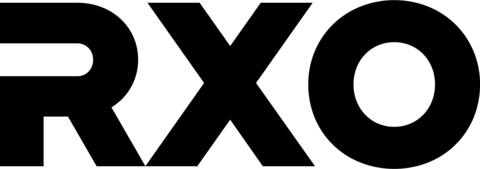
The United States just announced creation of the U.S. AI Safety Institute Consortium (AISIC), one day after the U.S. AI Safety Institute (USAISI) named its first Director of the U.S. Artificial Intelligence Safety Institute. The appointment of Elizabeth Kelly was announced by Gina Marie Raimondo, the Secretary of Commerce of the United States.
The Consortium has a blank slate in front of it, as it seeks ways to combine over 200 companies and organizations which develop advanced AI systems.
What indicators might help keep a finger on the pulse of AI within the economy? One approach might be to start with another branch of the Commerce Department – the United States Patent and Trademark Office. A look at its records provides a trove of data that can sense just how deeply AI is flowing through the economy right now.
This may not be the most attractive analogy, but the newly christened USAISI can look for some alternative sources of information. Think of how wastewater monitoring has become a tool of the CDC to detect the presence of COVID-19 and other viruses. An easy-to-follow chart on the CDC website explains that people “with certain infections (such as COVID-19), can shed pieces of the virus or bacteria when they use the bathroom, shower, wash hands, or launder clothing, even if they don’t have symptoms” into the wastewater system. These pieces of data can be used to detect and report on infections present in the community.
One of the ways to measure the importance of a term in the business world is to see how many people are jumping to register trademarks for this product.
The Trademark Office can show what is happening and what is projected to happen in the stream of commerce. There is a flood of activity for AI services of every type: speech recognition, natural language, banking, financial services, research consultancy, weather forecasting, and cars; processing information and customizing information about the way products are made (custom-designed clothing and measurement), “smart textiles,” prepared meals designed with AI. Goods created with the aid of AI, but not as touted as AI-created automotive vehicles.
Likewise, activity in the U.S. Trademark Office can suggest the number of ways that businesses are using terminology in a particular field.
Before the year 2016, there were less than 700 trademarks which used the term “Artificial Intelligence.” Not surprisingly, today we may find 50,000 pending applications and existing registrations which use these words. But here is another newsflash: it is not just for software-related products and services.
Companies are registering clothing that features AI-generated artwork.
There are skincare preparations which are “generated by Artificial Intelligence” or “generated by Artificial Intelligence algorithms.”
All sorts of businesses outside the arena of artificial intelligence programming and hardware may be claiming to have products and services which incorporate artificial intelligence. This is not yet reflected in the records of the Trademark Office, which are often a reflection of companies’ plans. With the huge amount of attention being devoted to AI’s benefits and problems, AI as a whole has not yet barely even dipped a toe in the economic waters. It’s too early.
The wastewater/trademark application analogy is far from perfect (and I am pretty sure this is the first time that sentence has ever been written). Companies fall in love with the name-creating process (and AI is itching to dominate this process too), and love nothing more than coming up with a great name. But often, companies do not file applications in the U.S. Patent and Trademark Office for those names. This is especially true for startups which either lack experience in the filing practice or do not want to incur what are typically relatively modest – but nonetheless real – fees that come with the process. Some businesses wish to keep their plans secret from the prying eyes of competitors, particularly bigger, more well-funded competitors.
Often, trademark lawyers will counsel that the benefits of filing outweigh these concerns. For instance, if a trademark has not yet been used, the only way to try to stake out a claim for a company’s right to own and use a mark is by filing an application in the Trademark Office.
At present, there are almost 2,000 trademark applications which have been filed in the U.S. Patent and Trademark Office which stake out a claim to use the term “Artificial Intelligence” as part of their mark.
There is no doubt that applications which may not use “Artificial Intelligence” in the name, but which have artificial intelligence services, have moved into the forefront of trademark applications. In 2016, there were under 700 applications which used the words artificial intelligence among their recitations of goods and services. Those numbers basically doubled from 2017 to 2018, and by 2020 there were over 4,500 pending applications and registrations listing artificial intelligence among the goods and services. As of the end of last year, 2023, that number has almost doubled again, to almost 8,000.
There were over 4,500 marks for travel mugs in 2020. This is the same number we saw that year for artificial intelligence. The numbers are very small.
Most likely, no one is surprised by any of this. But when we put it into context, the CDC analogy tells us that the raw numbers do not reveal an epidemic of uses. We can tell this by comparing AI to other types of products that people try to register. As Valentine’s Day approaches, let’s start with an old standby – the word “chocolate.” There are over 65,000 current and former trademark applications which apply to “chocolate” products. The word “computer?” Hundreds of thousands of trademarks.
“Hotel” is in 70,000. Even the humble “tire” is named in over 50,000 trademark applications or registrations which have been filed over time. Sweatshirts: 273,000. Car seats: 10,000. Wines: 158,000. If you are more of a beer lover, you will know that there are just slightly less present or past trademark registrations or applications for beer: 141,000. How about marks for the good old-fashioned pencil? Up to almost 100,000 of those.
The number of applications and registrations which list the word “Internet” is starting to approach a half million. In 1999, just before that “cataclysmic” Y2K meltdown we all remember, the number of applications filed including “Internet” among the goods and services in the year 1999 stood at 5,800. Perhaps bolstered by humanity’s unexpected survival of Y2K, the number of applications citing “Internet” skyrocketed to 16,000 the next year. Perhaps these numbers also suggest we should expect an explosion of filings for AI products and services.
Signals from the Trademark Office are only detecting relatively trace numbers of AI marks in the pipeline right now. This suggests a tidal wave is coming. Using the Trademark Office records as predictor, the boom has barely, barely, barely begun.



